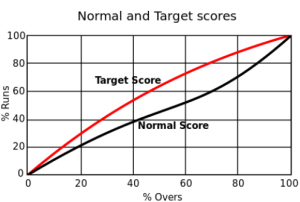BCCI has been using the VJD method for its domestic competitions for sixteen years for calculating targets in rain-intervened matches.
Why BCCI Uses VJD Method For All Domestic Tournaments But Prefers DLS For IPL
BCCI has been using only DRS methods in IPL to calculate targets in case rain intervenes in matches rather than the VJD method introduced in India.
The DLS method formally adopted by the ICC continues to be the BCCI’s preference in the Indian Premier League, despite using the Indian method for all other domestic fixtures.
Even State tournaments like TNPL use the VJD Method, but there is not even a proposal for using the VJD method as the trial in the IPL was not accepted.
What is the VJD Method
The V Jayadevan system, also known as the VJD method used for calculating target scores in One-day and T20 matches if they have been interrupted due to various reasons.
Like the DLS method, it calculates the target score for the second batting team, taking the account all available resources and the run rate of the first innings.
However, it uses a different set of parameters and calculations, which leads to slightly different target scores when compared to DLS.
Who Invented the VJD Method
Jayadevan, an Indian engineer was the founder of the VJD method for computing target scores in Limited over cricket. The method is built based on two curves concerning % Overs and % runs. The first curve (Normal) will reflect the normal run when there is no interruption.

The second curve (target Curve) indicates how the batting side should speed up after an interruption. The Normal curve takes the account of both Overs played and the percentage of lost wickets.
On the other hand, a target curve is used to set revised targets, considering only the percentage of overs played.
Why BCCI prefers DLS over VJD in IPL
Jayadevan has discussed using the Indian method in the upcoming IPL 2024 tournament, but the officials of the governing body showed no interest in the proposal.
“There has been no dialogue with the BCCI in over six months. The last time I met BCCI officials was back in March 2023 when Abey Kuruvilla told me that he would arrange a meeting to discuss the possibility of using the VJD method for IPL 2024.”
“I don’t know why BCCI is averse to using it in the IPL when all other domestic competitions and leagues in the country use this. IPL is also India’s domestic T20 league,” says Jayadevan.
Arun Dhumal’s view on VJD vs DLS
BCCI officials say that they are not averse to trying the VJD method in the Indian Premier League but need to go ahead of the match officials and referees.
When asked about why only the IPL uses the DLS method while other domestic tournament uses the VJD method, Dhumal said
“We are not averse to using it and it can be explored but the word of the match referees and officials would matter. We need to discuss with them to see if this can be implemented and then discussions can be taken forward.”
“Since the first season, IPL has been using the DLS method. It is also formally adopted by the ICC for international fixtures. But we can explore the VJD method for future editions and take inputs from the match referees and officials regarding it.”
How much VJD Creator Received
The VJD method has been used widely in the Indian domestic circuit except IPL. Ever Since the VJD method was introduced, it has been used in over 500 rain-affected matches in India including leagues like TNPL, KPR, and ICL.

But Jayadevan hasn’t received any recognition or rewards. “In the last 12 years, results of over 500 domestic matches were decided satisfactorily using the VJD method.”
“State T20 leagues like KPL, and TNPL are also using the system. However, as far as my efforts during the last two decades are concerned, I haven’t received any recognition or monetary benefit,” said Jayadevan.

